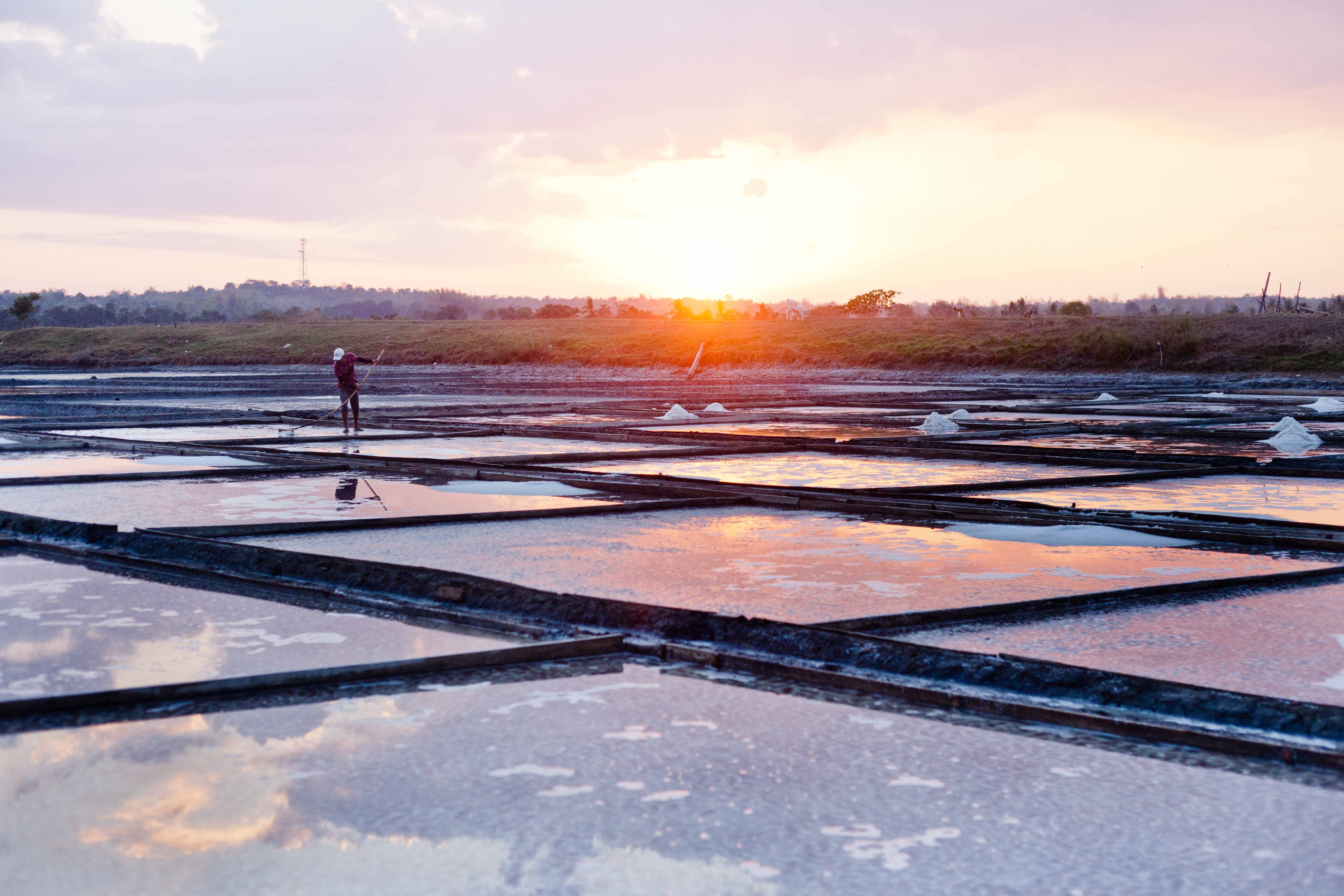A condiment so common it could be found in every dining table and kitchen of every household. A mineral so ubiquitous it can be traced in almost everything we use. Grains so small we failed to recall its significance to the human body and its impact to human civilization.
We live with a level of salinity almost equal to the ocean—explaining the connection between humans and our natural yearning for salt water. Salt is very basic: it helps preserve our food and makes it taste better. But we tend to forget that beyond the physical, this is where life began and where we built communities to survive. During ancient times, salt was so important that it was used as currency, tracing back the Latin origin of the word ‘salary.’

In a province on the northwest part of Luzon Island, there lies a municipality that lives on salt—Dasol. The province of Pangasinan is known to have the best aquaculture experts in the region. With fishponds and cages scattered all throughout the province, Dasol stands out with its local industry of salt making. “Back in the day, fishponds were also the main source of income in the area,” shares Noel Nacar, elected mayor of Dasol. Nine out of 18 barangays are coastal barangays. Their 33-kilometer coastline facing Dasol Bay makes it as a perfect setup for aquaculture. But Dasol found a livelihood more beneficial and sustainable than aquaculture.
Dasol’s local government prioritizes what’s best for all of Dasol’s inhabitants. “Everybody will always need salt. Its uses go beyond the culinary industry. We find sodium chloride in health, cleaning, and beauty products like soap and toothpaste,” Nacar enumerates. But production of salt is not an easy task. It is heavily dependent on nature—the sun and the sea. The constituents of Dasol pray for sun and more sun. More sun means speeding up the process of salt making and a heftier harvest that can make up for the halt in production during the rainy season.
Dasol has a total of 10,000 salt beds across nine coastal barangays and an additional three barangays that has access to brackish waters from riverines, salt farming is a family-based industry; every family has an allocation of 25 to 35 salt beds. 400 families benefit and earn from direct harvesting of salt. The aforementioned figure does not take into account the other workers that help in the production process. Everybody in the salt-farming community has a role. The vast salt beds are to be formed and shaped by the family in-charge and some helpers. There is a separate group of people who places broken clay pot pieces—an activity similar to tiling—on the salt beds. There are also people tasked to weave baskets and sacks used during harvest; and designated people are also needed to measure and weigh the heaps of salt harvested and to carry the heavy sacks.
When the clock strikes three in the afternoon during the dry season, everyone will start working in the salt farm. It is their 3 o’clock habit of harvesting salt. “However, our constituents can take another job apart from being a salt farmer. If the husband has an 8-to-5 job in the city, the wife can start feeding water into the salt beds to start the process in the morning. Then after work, the husband can help out in harvesting the salt with their kids,” Nacar explains.
When asked what’s distinct about Dasol’s salt, Nacar turns to me with pride and says, “Dasol is the home of quality salt for a reason. Our salt is pollution-free.” Protecting and developing the industry entails making the protection of the environment—both land and water—a top priority. The local government enacts different programs to ensure that their waters are clean and safe from illegal fishermen. They reforest their mangrove sanctuary regularly since mangroves serve as the natural filter of seawater. “Last March 27, in partnership with the Maritime Industry Authority, we launched a training program for fish wardens or bantay dagat,” asserts Nacar, “With programs like these, we hit two birds with one stone. We protect the industry and the environment.”
Nacar admits that there is a higher monetary yield if they shift their livelihood to aquaculture or mining like their neighbor municipalities. “We have to take into consideration the long-term effect of the other industries,” explains Nacar. He notes that if they pursue aquaculture, their local fisherman will lose their livelihood; they’d have to fish farther into the sea or fish on the waters of other municipalities. On the other hand, even if they have the opportunity to earn more revenue from mining—in fact, millions compared to thousands they currently earn from salt farming—the people of Dasol believe that they would only be taken advantage of by investors in a short span of time. “Mineral is a limited resource; it’s like a ticking bomb. What would happen to us once all the minerals have been collected?” Nacar further justifies. Fe Ballen, municipal planning and development coordinator, adds: “Our generation will not suffer because of our greediness; it is our children who will pay for the destruction of Mother Nature.”
Nature has provided abundant blessings; however, with these come responsibilities. Man knows better than to lay waste to nature’s creations, making it better for the next generation. Looking past the now has helped Dasol to create an industry they could proudly call their own—an industry that is by Dasolinians for Dasolinians—without harming the environment.
This story was originally published in Northern Living, May 2015.